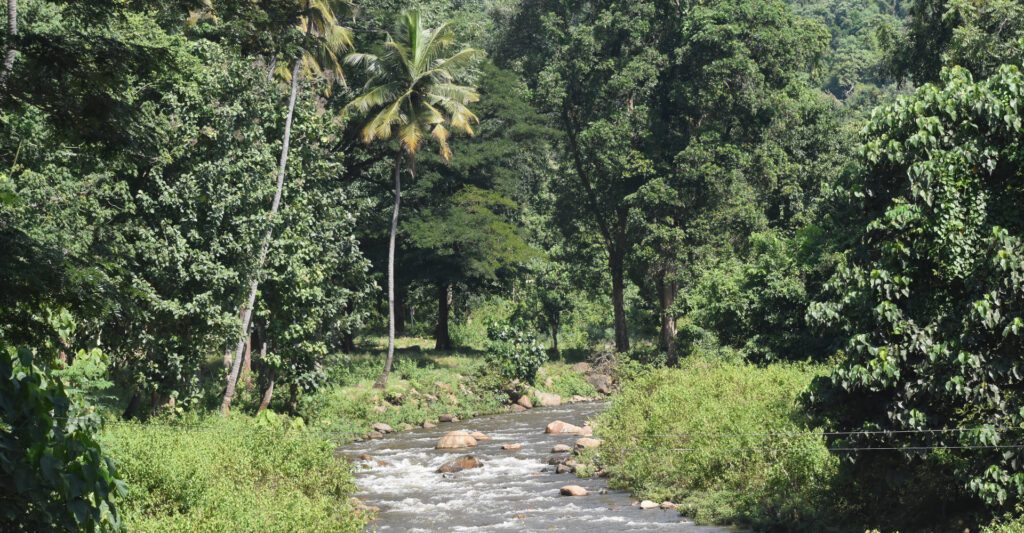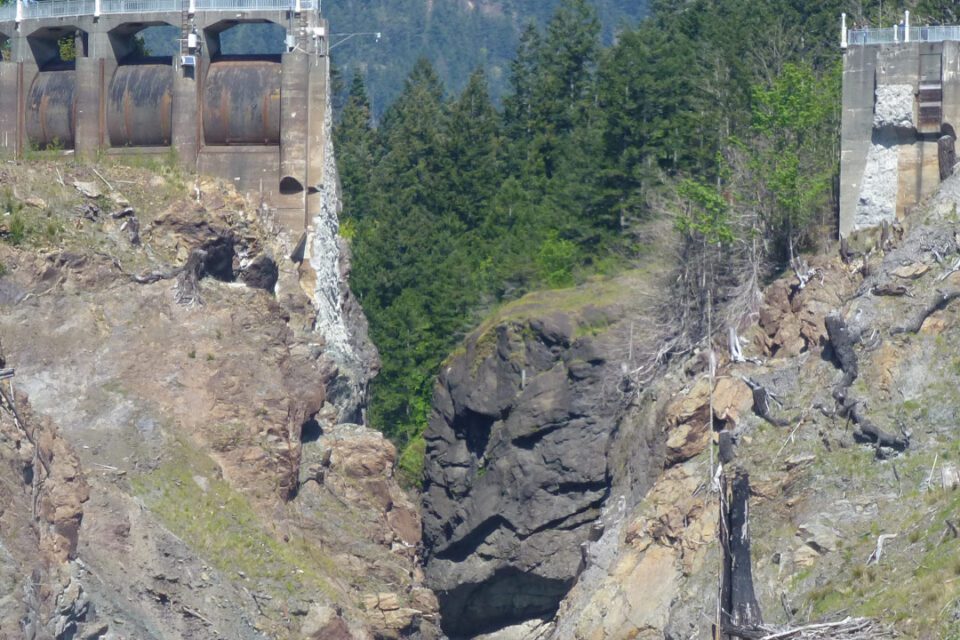We are witnessing opposing trends in river basin management. One trend—as described in a recent article in the Guardian (16 May 2022; see link in the reference section)—aims to restore free flowing rivers by removing obsolete barriers and dams. The other trend wants to slow-down the flow of water through a catchment with the objective to attenuate hydrologic extremes—which are expected to become more extreme because of climate change.
There are solid arguments in favor of either trend.
Dam removal re-establishes the connectivity in riverine ecosystems and is credited with restoring fish migration routes, ecological restoration, and improving floodplain functions. These are important achievements. The documentary “Breaking Boundaries” reports that the planetary boundary for biosphere integrity was crossed many years ago and biodiversity is in rapid decline across the globe. Hence, in most cases, environmental protecting must have priority. Rivers are bio-diversity hotspots and dams can do a lot of damage to the health of a river.
In addition, many old dams and weirs no longer serve a purpose. They are expensive to maintain. They also represent a potential hazard if not brought up to modern safety standards. A potential blow-out could jeopardize downstream built-up areas and critical infrastructure. Income from hydropower is often not enough to make the dam an economically viable proposition—specifically not for smaller dams. Hence taking out barriers seems the way to go.

But let’s also have a look at the opposing trend. It is all about climate risks.
A warmer climate heightens flood risks. This is attributed to more moisture in the air—because of warmer air—in combination with slower moving storms. Indeed, an almost-stationary storm will increase the duration of a rain event, and therefore inevitably lead to more rainfall in a specific location. These local precipitation extremes have caused catastrophic floods in Europe, Australia, and other places in the last year. Many of these floods were not anticipated and broke historic records.
Climate change is anticipated to increase the frequency and magnitude of extreme weather events. It is therefore highly probable that—for many places on this globe—the risk of extreme floods (and droughts) is beyond what was previously expected, and we will need to prepare for this.
This is problematic if people have built their house close to the river. With higher floods, many houses that used to be safe are now at risk. It is just not possible to protect the entire riparian zone with higher embankments, specifically not in the river’s middle reach and upper valley. Common sense would dictate to move these houses to higher grounds and evacuate the area vulnerable to floods, but that is—with a few exceptions—not a practical proposition given the volume of buildings and infrastructure elements involved. Instead, interventions to reduce flood damage will often focus on capturing rainfall and slowing-down the flow of water in the catchment with the aim to attenuate the flood wave, or (temporarily) store part of it.
Reduce the speed at which water flows through the catchment
This can be achieved through a variety of measures that include catchment restoration, agricultural practices that encourage infiltration of rainfall, water harvesting features, check dams and leaky weirs, green infrastructure, re-creating wetlands, and others. These measures also include establishing mini/micro/small reservoirs. Measures will obviously differ per location and watershed, but a common denominator is that all flood prevention plans include more water storage. Which, for the upper valley and middle river reach, implies dams (micro/mini/small/….) that obstruct free flowing water and damage critical ecosystem functions.
The question is now how to reconcile these opposing trends.
Aim for a tradeoff between nature and nature
My sense is that, if water storage is required for flood prevention, it is best achieved by establishing a distributed set of small reservoirs in the upper reaches of the catchment. The higher we are in the watershed, the smaller (and cheaper) the structures that are required. In addition, small reservoirs can be established on marginal lands that farmers are keen to abandon when offered reasonable compensation.
If even more storage is needed, reservoirs can be concentrated on a tributary, while adjacent tributaries are left free flowing.
The distributed set of small reservoirs can be integrated with a re-wilding effort that aims to restore nature on a large scale in marginal lands—which typically coincide with the upper catchment reaches. It offers opportunities for eco-based tourism and ecological restoration. This, in turn, provides spin-off opportunities and jobs to small rural communities. Hence the re-wilding policy—which includes the establishment of the small reservoirs—is often well received by the local population.
Apart from flood management—by storing part of the flood wave—a distributed set of small reservoirs performs many functions such as landscape rehydration, drought management, maintaining environmental flows in the downstream river, catchment restoration, and creating rich environmental value. The small reservoirs can also be equipped with a low-head turbine.
Finding the right balance between environmental protection and flood prevention is key. If will differ per location.
| Harness Climate Protection to Drive Climate Solutions It is interesting to explore whether a newly established small reservoir can be equipped with a (low head) turbine. After all, it would produce green energy. Depending on the size of the reservoir, one can consider a pumped-storage setup with a windmill or solar panels. However, a single turbine installation is challenging in terms of design, permits, environmental impact assessment, and operation and maintenance. In addition, single installations have no value for power utilities and do not attract green investors. Remember, these reservoirs are small. By contrast, combining multiple installations in an assembly—potentially including other renewable power sources—would mobilize economies of scale while also facilitating grid connection (feeding power into the grid). The latter is associated with stable and predictable revenue: a prerequisite to attract green investors. A distributed set of small reservoirs established in the upper catchment zone would serve as the core for such assembly. It is essential that—from the outset—each reservoir can include a turbine and this needs to be incorporated in the original hydraulic design. At the same time, permitting should be covered through the approval process for the construction of the entire reservoir assembly. The hydropower component serves to balance variable renewable energy sources and actively contributes to the climate solution. The operation of the assembly of multi-purpose (small) reservoirs is fine-tuned using accurate weather forecasts. Regarding flood management, the reservoirs will be emptied when extreme precipitation events are predicated, which probably happens less than once a year. A Green Investment Opportunity Because of the multi-purpose nature of the reservoir assembly, a viable revenue model cannot be based on energy arbitrage—in which hydroelectricity is only produced during high demand periods in the spot market. It would conflict with the environmental and hydrological functions of the assembly. Rather, a Public Private Partnership (PPP) is envisioned in which the hydropower facility is compensated through a ‘cost-of-service’ agreement, with an agreed rate of return on the investment. It offers a stable, predictable, and long-term revenue stream that is attractive to green investors. Could this work? (Disclaimer: Bart Hilhorst is on the advisory board of Turbulent, which manufactures low head turbines) |
REFERENCES
“https://damremoval.eu” (Interviews with Beth Lambert & Kim Bernie-Gauvin)
